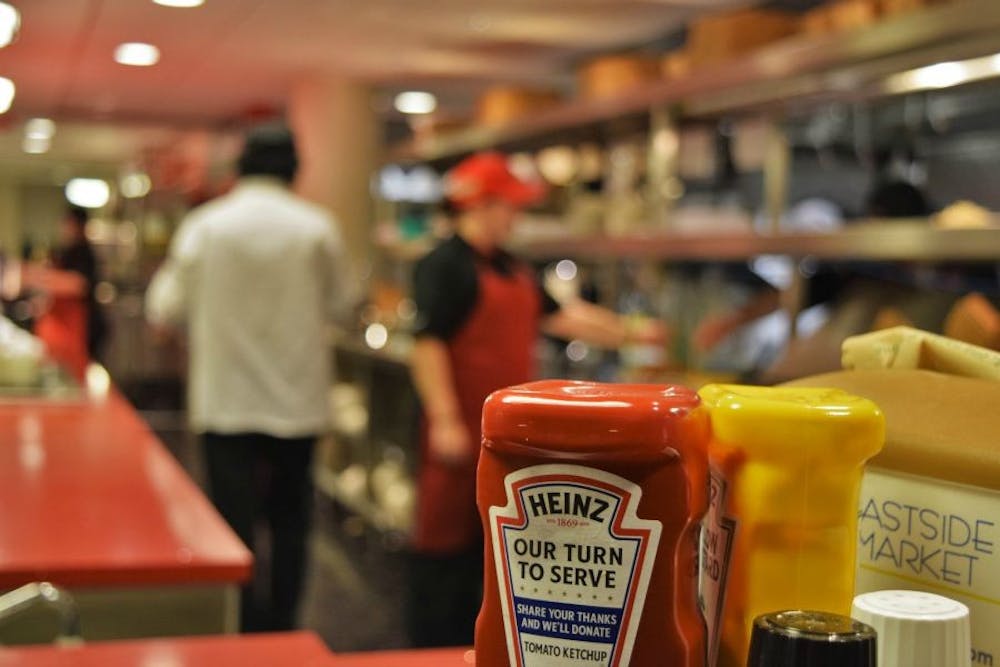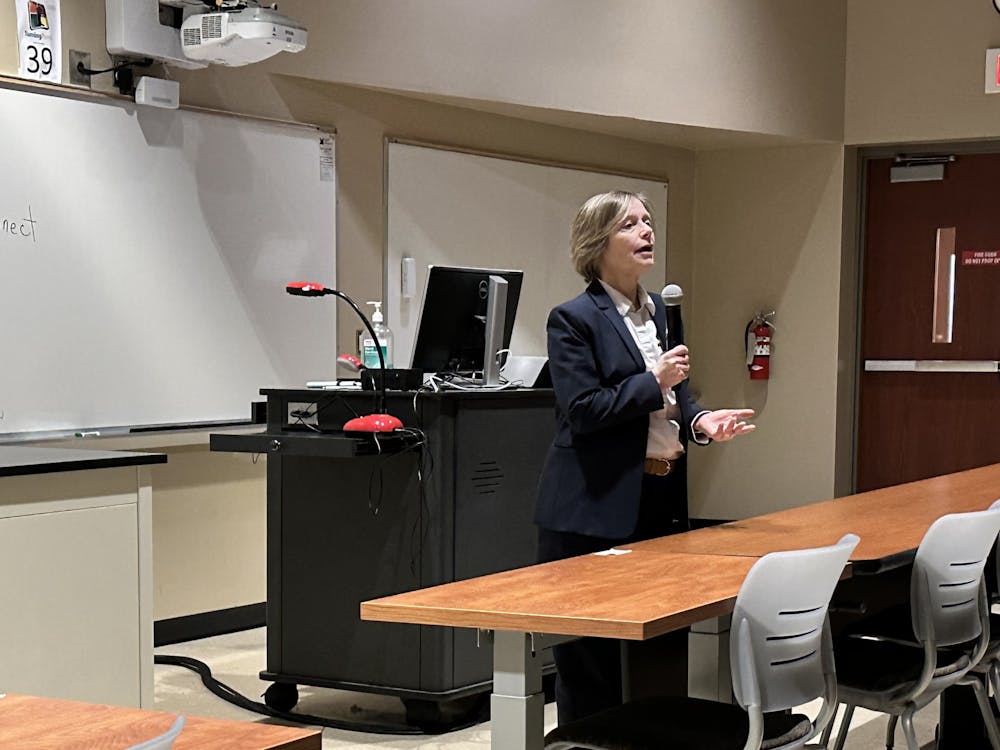By Nick Ramsey, For The Miami Student
A subtle change students may notice on campus this year is a slight price hike to some a la carte items at Miami's dining locations. These price increases are due to a change in the diplomat meal plan and inflationary pressures.
Chris Yeadon, director of dining services, said Miami dining workers felt like their prices were falling below the market price. Certain food items throughout campus were selected, according to Yeadon, for price adjustments based on market basket comparisons, a comparison of prices of similar goods and inflationary pressures.
Several items became slightly more expensive in 2015-16: stir-fry, which increased from $6.79 to $7.49, entrée salads, which jumped from $7.95 to $8.25 and beef and pork burritos went from $6.79 to $7.50. Sundial premium pizza slices jumped 50 cents to $3.25 and the salad bar at Bell Tower increased from $.39/oz. to $.59/oz.
Other increases students could see on campus are not necessarily due to price hikes, but a result of changes to the diplomat meal plan. This year students on the diplomat meal plan will receive just a 50 percent discount instead of the 60 percent they received last year, said Yeadon. A la carte locations receive a 30 percent discount, which has not changed from last year.
The diplomat meal plan comes with $1,625 base fee per semester, which supports the maintenance, labor and general upkeep of the dining halls
Sophomore Nick Shermis did not notice the increases from last year, but said he believes the price hikes will make dining difficult for off-campus students who don't benefit from the diplomat discount.
Olivia Childs, a sophomore, said she doesn't tend to notice food prices until the end of each semester.
"It really doesn't matter to me until the end of the semester when my meal plan runs out," she said.
And, when she's trying to stretch her meal plan dollars, Childs said she steers clear of the pricey MacCracken market.
"The only place where I really notice the outrageous prices is at the market," she said.
There are currently no plans to raise prices for this school year, but Yeadon did warn that food prices tend to fluctuate. The drought in California, for example, has raised crop prices.
Enjoy what you're reading?
Signup for our newsletter
Along with a la carte price adjustments and discount changes, there could also be more changes to meal plans starting next year.
"We are in the process of evaluating our meal plans and pricing structure with possible changes for the 2016-17 academic year," Yeadon said. "We will engage with various student groups as part of the process before making final recommendations."
It is difficult to compare meal plans from school to school because each school structures them differently, but Miami's prices are fairly comparable to other public universities in Ohio. The highest level of meal plan at Miami is more expensive than Ohio State University and Ohio University, but Miami is the only one in Ohio that allows unused balances to rollover into the next academic year.
In the fiscal year 2014, Miami dining had revenues of approximately $40 million, compared to $37.2 million in 2013 and $35.6 million in 2012, said David Ellis, associate vice president of budgeting and analysis for the university.
But, dining did not make a profit in the fiscal year 2014, and, at this point, can't cover its expenses without revenue from residence halls, said Kim Kinsel, associate vice president for auxiliaries.
The main goal of Miami dining, Yeadon said, is "to be a self-supporting entity."




